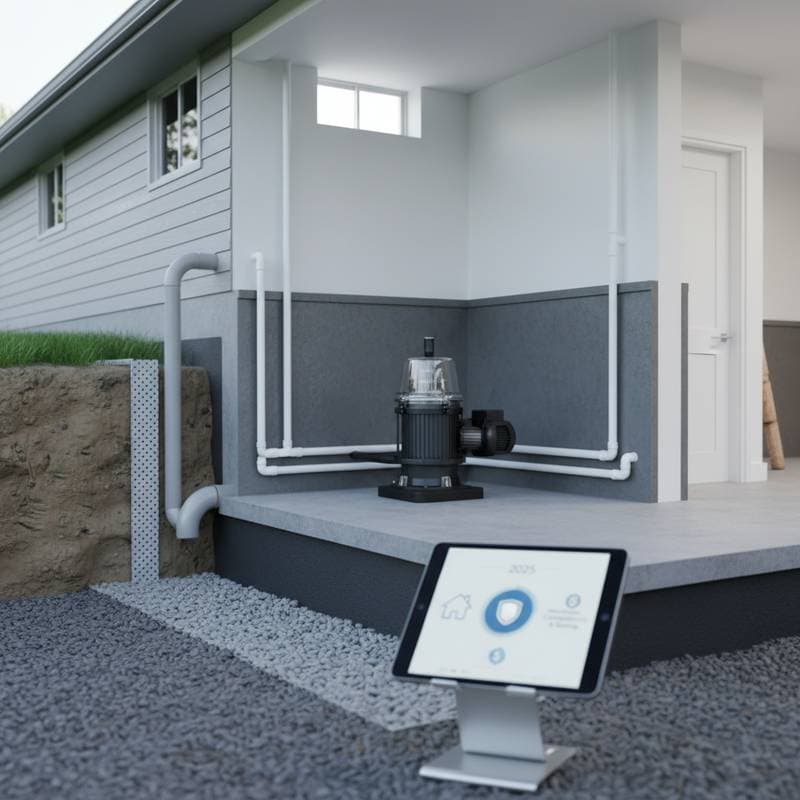Understanding the 2025 Insurance Changes
Insurance landscapes evolve to address rising flood risks, and 2025 brings significant updates for homeowners. Providers now require verifiable evidence of basement waterproofing to qualify for full policy benefits. This shift emphasizes prevention over reaction, protecting both properties and financial stability.
Homeowners in vulnerable areas face the most immediate impact. Policies may exclude basement-related claims without documented safeguards. Early preparation aligns with these standards and safeguards against unexpected denials during renewals.
Key Waterproofing Solutions for Compliance
Effective basement protection involves multiple layers of defense. Insurers recognize systems that demonstrate comprehensive risk mitigation. Below are proven options that meet the new criteria.
-
Interior Sealant Applications: These coatings seal foundation cracks and walls from the inside, preventing moisture seepage. Ideal for existing homes, they require minimal disruption and provide immediate documentation through installation receipts.
-
Exterior Waterproofing Membrane: This barrier applies directly to foundation walls, repelling water before it reaches the interior. Professionals recommend it for new constructions or extensive remodels, where access to the exterior is feasible.
-
Sump Pump with Battery Backup: Reliable water expulsion remains critical during outages, common in severe weather. The backup ensures continuous operation, offering insurers confidence in system durability.
-
Backwater Valve: Installed in sewer lines, this device prevents reverse flow from overwhelming drains. It addresses urban flooding risks, a frequent concern in municipal systems.
-
Smart Water Sensors: Advanced detection tools monitor for leaks or rising humidity, alerting owners via mobile devices. Integration with home systems allows swift responses, enhancing overall prevention strategies.
Layering these elements creates robust redundancy. Insurers often provide premium reductions for such integrated approaches, minimizing future claim complications.
Integrating Style and Functionality
Modern waterproofing advances prioritize seamless integration. Materials blend with interior designs, avoiding obtrusive appearances. For instance, drainage channels conceal behind drywall, while pump enclosures match surrounding decor.
When planning basement finishes, select durable options like moisture-resistant laminates or treated drywall. These choices withstand humidity fluctuations without compromising aesthetics. Professional consultations ensure selections align with both visual goals and insurance specifications.
Addressing Frequent Concerns
Homeowners often seek clarity on these mandates. The following responses cover typical inquiries, providing practical guidance.
Do These Rules Affect All Properties?
Requirements vary by location and risk assessment. Properties in high-flood zones or near waterways encounter stricter enforcement. Review policy details or consult agents to determine specific obligations.
Is DIY Installation Sufficient?
Basic maintenance, such as crack sealing or yard regrading, suits independent efforts. Complex installations, including pumps or exterior membranes, demand certified professionals. Only licensed work qualifies for insurance validation.
How Does Waterproofing Impact Premiums?
Certified installations frequently yield discounts, sometimes 10 to 20 percent based on regional factors. Initial costs recoup through savings and avoided claims within a few years. Compare quotes to maximize benefits.
What If Flooding Has Not Occurred?
Historical absence does not exempt properties. Insurers prioritize forward-looking measures amid climate shifts. Renewal processes may require updates regardless of past experiences.
How Often Must Systems Receive Maintenance?
Annual checks maintain effectiveness and compliance. Test pumps, inspect valves, and clear drains regularly. Keep detailed records to support warranty claims and policy renewals.
Steps to Achieve and Document Compliance
Begin with a thorough basement evaluation. Identify vulnerabilities like poor grading or visible cracks. Engage inspectors familiar with insurance standards for accurate assessments.
Next, prioritize installations based on risk level. Start with high-impact solutions like sump pumps, then add sensors for monitoring. Obtain certificates from installers to compile a compliance portfolio.
Budget for ongoing upkeep. Schedule professional servicing and retain all documentation. This portfolio proves diligence to insurers, securing uninterrupted coverage.
Securing Long-Term Home Resilience
Basement waterproofing transcends compliance; it fortifies home integrity. These measures preserve structural health, enhance living spaces, and stabilize insurance costs. Homeowners who act decisively gain confidence in facing environmental challenges.
Document every upgrade meticulously. This record not only satisfies insurers but also elevates property marketability. A protected basement translates to enduring value and comfort for years ahead.



